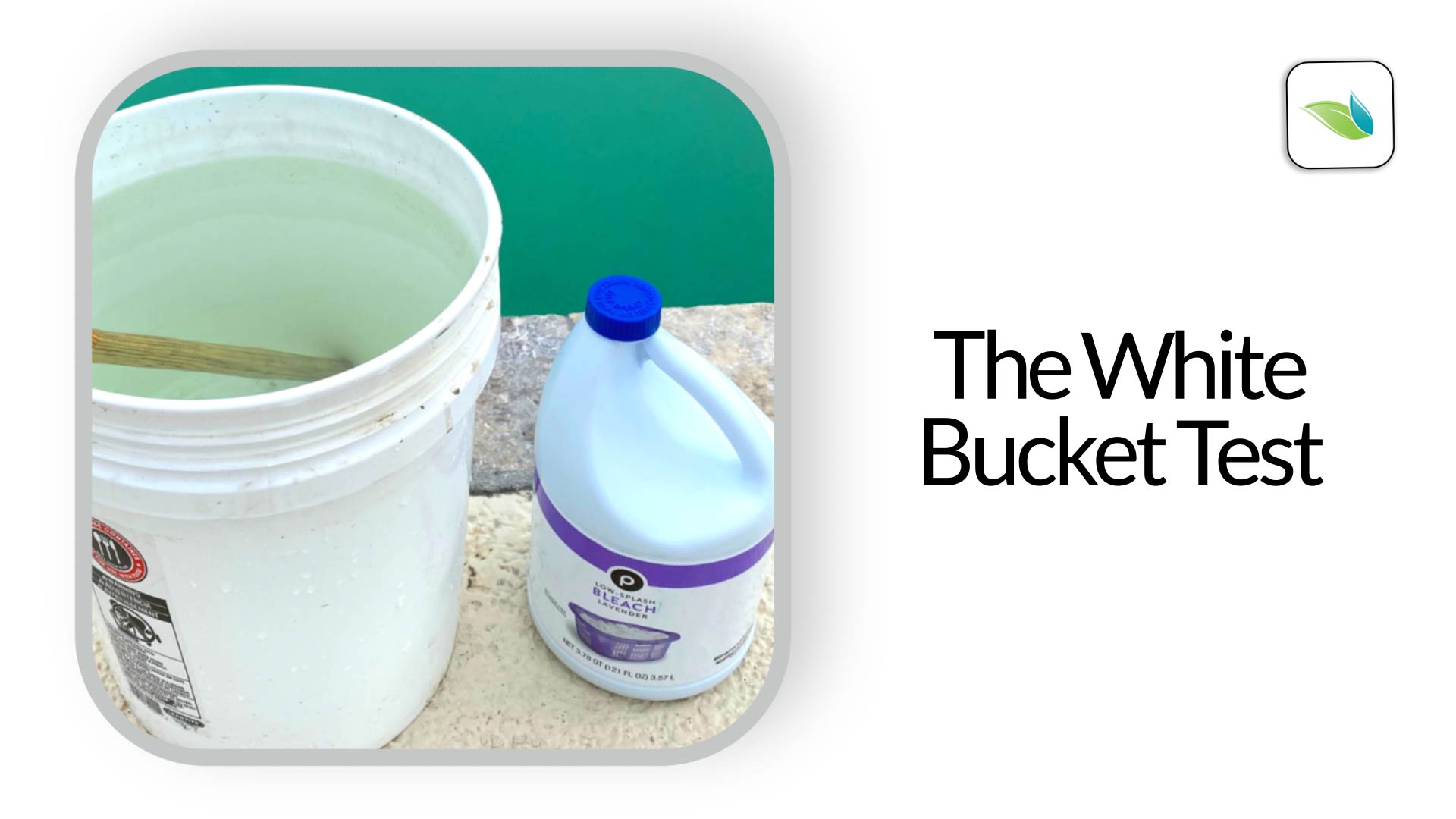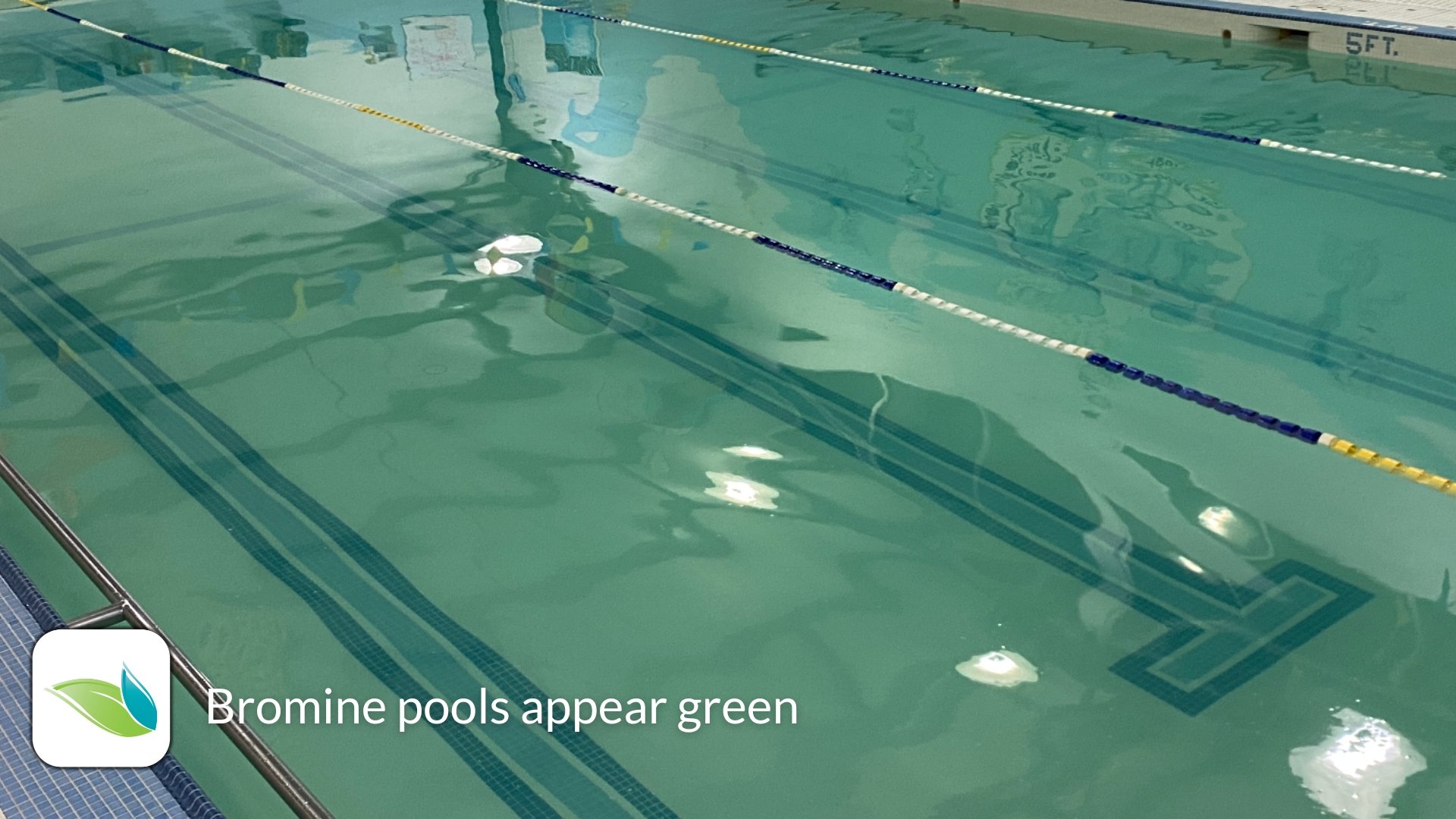The White Bucket Test: How to Identify Green Pool Water

How to Diagnose Discolored Pool Water
Using the White Bucket Test
Overview
Why is my pool green? Or brown? This procedure is a simple and reliable way to diagnose the pool (before treating it) so you can know for sure. A prescription without proper diagnosis is malpractice.
Discolored water usually occurs for one of these three reasons:
- Algae or other organics (tannins)
- Copper oxidation (or iron if the water is brown or red)
- Not enough calcium, especially relative to alkalinity
- Bonus: Bromine pools
Simply pouring chlorine into the discolored pool might be your first instinct, but if the problem is because of metals in the pool, the chlorine will only make it worse. Conversely, let's say you assume it's copper or iron, and put in SC-1000. But the problem was actually algae. We know that chlorine will be reduced by SC-1000 not yet bound to calcium or metals. Trust us, we have made these mistakes more than we want to admit.
Using the white bucket test, you won't have to guess or assume why your pool is discolored. You can diagnose before prescribing a solution.
Related Procedure: The Orenda Green Pool Cleanup
You will need:
- A clean white bucket
- A stirring stick
- Camera or smartphone
- Liquid chlorine
The White Bucket Test
This test involves chlorinating a bucket of green pool water and observing the change in color.
- Fill a clean white bucket at least halfway with pool water (or tap water if testing for metals).
- Observe the green tint of the water and take a photo with a camera or smartphone camera.
- Add two or three ounces (2-3 fl.oz.) of liquid chlorine to the bucket, then stir.
- Within 30 seconds you should notice a difference in color.
- If the water clears up, your pool is discolored from algae or tannins (or some other organics that can be oxidized).
- If the water becomes more discolored or darker, it's metals.
- If there is no change in color, test your total alkalinity and calcium hardness levels.
Chlorine added to the bucket gives you an immediate picture of what would happen if you poured chlorine into the pool...but in a separate sample.
The white bucket allows us to see the green tint of the water for color contrast. Chlorine either kills the algae (and clears the water) or it oxidizes copper (and darkens the water). If no color change is observed, test your total alkalinity and calcium hardness levels. If your TA is too close (or higher) than your CH, the water can turn green. Strive for a 3:1 ratio of calcium hardness to total alkalinity to avoid this.
Once you know why your pool is green/discolored, then you can address the problem accordingly.
Related Procedure: How to Implement the Orenda Program
The White Bucket Lid Test
What do you do if you scoop a bucket from a discolored pool, but the water is perfectly clear? Perhaps the discoloration is not in the water itself, but from staining on the pool surface. A clever thing you can do to confirm this is utilizing a piece of white plastic, like a white bucket lid. Put the white plastic on the bottom of the pool, especially in the affected area.
If the lid still looks perfectly white, the discoloration is not in the water, but on the surface. You should be able to see the contrast in color clearly.
Frequently Asked Questions (FAQ)
What if the pool is green but chlorine is high?
If your pool is green and chlorine is high, that usually means copper oxidation. It is also possible with algae and improper TA/CH ratios, but it's rare. Still do the white bucket test to find out. Oftentimes high chlorine does not necessarily mean fast killing rates. For instance, if your CYA is too high, you could have high chlorine but it is slowed down. You may also have other contaminants in that water like nitrogen compounds, which also tie up chlorine.
Are there other sources of green pool water?
Apart from using dyes to deliberately color water green, we are unaware of other causes at this time. But we are always learning, so if you know of another reason, please let us know! One other possibility is that certain pool surface colors can distort light so that water looks green. We saw a plaster surface one afternoon that made the pool look emerald green, only to find out the homeowner specifically asked for that color. Again, the white bucket test would quickly show you the water was not actually green.
What other discolorations can occur in water?
Water can become any of the "earthy" colors: green, yellowish, brownish, or some combination of all of them. Water can also become purple, or even turquoise. The colors depend on the contaminants. The earthy colors are usually from tannins or algae (if the water is cloudy), or from heavy metals. Primarily copper or iron, or some combination of those. When you start seeing odd colors like purple or turquoise, there are more factors at play. Purple usually involves copper and cyanuric acid (copper cyanurate), and turquoise usually involves copper and cobalt.
.jpg?width=760&height=428&name=copper%20cyanurate%20staining%20(1).jpg)
There are a wide variety of stains that can occur in pools. Often, stains will present themselves without a noticeable discoloration of the water itself. In that case, the white bucket test may not be effective because the water itself will not show a difference in color. The color is already on the pool surface.
Bonus: Bromine
We should also mention bromine. Bromine tends to turn water into a slightly greenish-blue color. It's not enough to show green in a white bucket test, however. It's just the natural color of brominated water, and it has no impact on the clarity or disinfection of water that we are aware of.
More Questions?
866-763-4269

